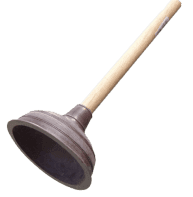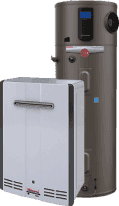
It’s likely that you only think about your home’s drainage systems when something goes wrong – like when you’ve got clogged drains or a leak in your pipes. But it can be helpful to learn the basics about the components that make up these plumbing systems.
So in this guide from Wilco Plumbing, we’ll provide you with a basic overview of how home drainage systems work and what the different components in your drainage system are intended to do. Read on to learn more.
It all starts with fixture drains. These are attached to each of your plumbing fixtures, like toilets, showers, bathroom sinks, and kitchen sinks. They adhere to a drain pipe that carries water out of the institution and into your drain line.
They are an essential part of your drain system since fixture drains are where all your wastewater will enter your branch drain lines, leading to the rest of your drainage and sewer system.
P-traps are immediately beneath bathtubs, showers, sinks, and other plumbing fixtures. This part of your drain system consists of a wide pipe with a sharp “P”-shaped bend, hence the name.
P-traps hold some standing water, sealing your drainage system. This prevents sewer gases (and smells) from rising out of your drainage system and stinking up the room. Without a P-trap to trap water and seal the system, nasty odours would be commonplace in your home.
Toilet traps function in the same way as a P-trap. A toilet trap is meant to trap water, preventing harmful gases from the sewage system from rising into the bathroom. However, toilet traps are typically built into the design of the toilet itself rather than being a separate component.
This pipe is near your washing machine (if you have one). Your washer empties into an upright standpipe, leading to a curved drain trap that functions similarly to a P-trap or toilet surprise, preventing nasty smells. It opens into a branch drain line.
Branch drain lines “branch” off each water-using fixture in your home, like sinks, bathtubs, washing machines, dishwashers, showers, and more. These lines usually run horizontally with a slight downward slope and connect to the soil stacks of your plumbing system.
A soil stack, which is also sometimes called a “main drain stack,” is a large-diameter vertical pipe, usually between 6-10 cm in diameter. Soil stacks are located at the end of your branch drain lines and carry wastewater and solid waste toward your sewer line and septic tank.
You may not realize it, but proper air ventilation is essential for your drainage system. Your drains must be vented properly to maintain neutral air pressure and prevent the suction power of water from draining all of your drain traps.
The soil stack vent, also called the “drain waste vent”, comes in. This vent consists of a large pipe, which attaches to your drain system at its lowest point and rises through your home and out of the roof.
Then, gases can be vented harmlessly out of the vent, and air can enter to maintain proper air pressure equilibrium in your drainage system.
The sewer line clean-out is attached directly to your sewer line, and it’s designed to be used for emergencies and cleaning out your sewer line, as the name implies. It consists of a large cap or hub mounted to your sewer line. This can be in your basement or utility area or located outside your home’s foundation.
The cap or hub can be removed from the clean-out to access the interior of the main sewer line. This is usually required if there is a significant clog in the main drain. A flexible camera can be used to identify the problem, and then a motorized auger can be used to eliminate the clog in your sewer system.
Your main sewer line is where all of your soil stacks connect and is located under the lowest floor in your home. This line runs horizontally at a slightly downward angle and out to your home’s septic tank or municipal sewer main. You usually will not be able to see this line, as it’s located below your foundation slab.
The final part of your drainage system is the municipal sewage main, which is owned and operated by the city. This is where your main sewer line connects to drain sewage from your home. Or, if you are located in a more rural area, you may have a septic tank where your wastewater will drain. Either way, this is where your home’s drainage system ends.
At Wilco Plumbing, we’re experts in plumbing and drainage systems in Sydney and the surrounding areas. Are you having trouble with clogs? Got strange smells in your bathroom? Hearing weird noises from your drains? Our team is here to help. Just give us a ring at (02) 9186 3371 or contact us online to schedule an appointment with trusted plumbers in Sydney and get the help you need.

Blocked Drains
Cleared

Hot Water
Cashback*
If you book online today!
Fill out your details below and we’ll contact you ASAP!!